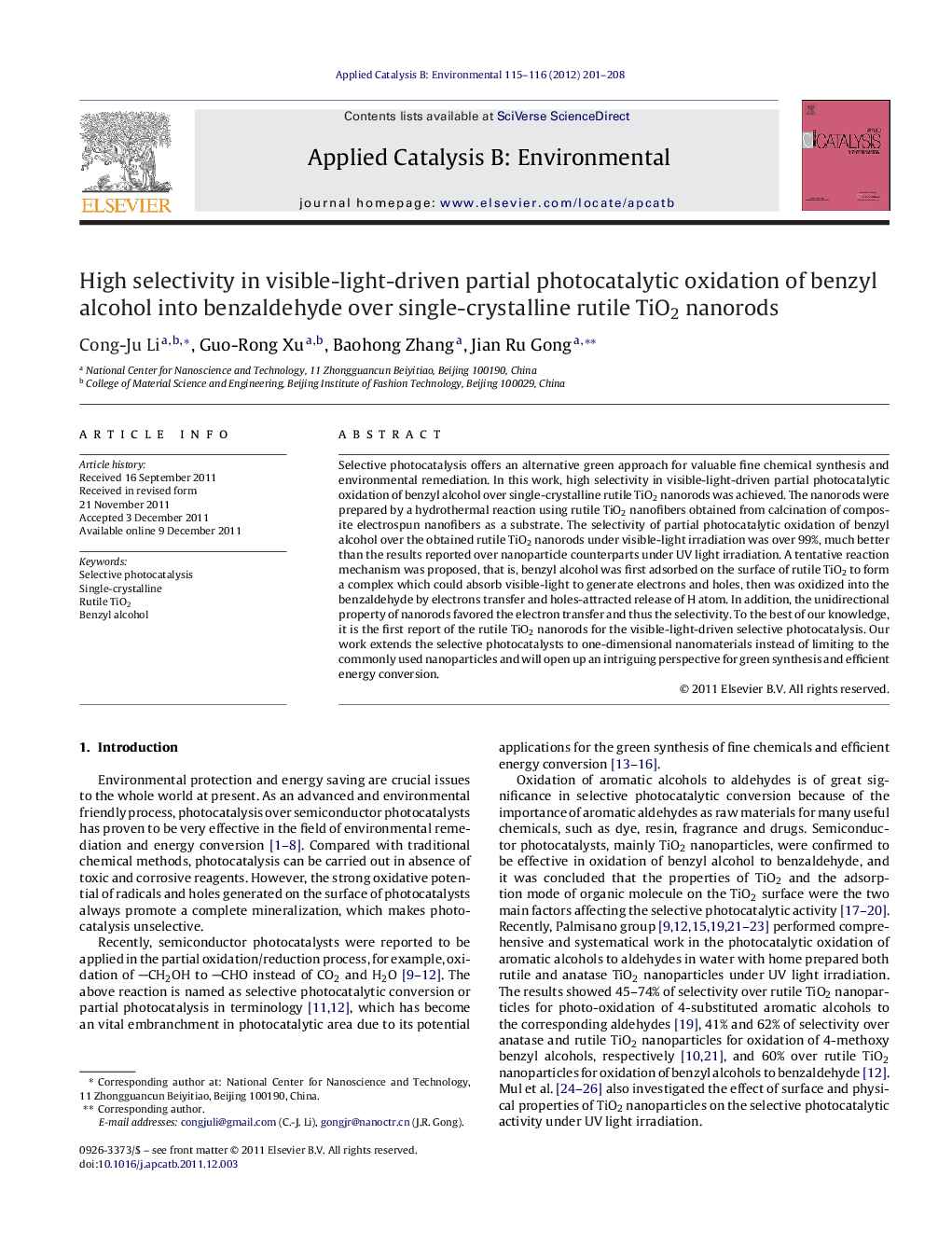| Article ID | Journal | Published Year | Pages | File Type |
|---|---|---|---|---|
| 46421 | Applied Catalysis B: Environmental | 2012 | 8 Pages |
Selective photocatalysis offers an alternative green approach for valuable fine chemical synthesis and environmental remediation. In this work, high selectivity in visible-light-driven partial photocatalytic oxidation of benzyl alcohol over single-crystalline rutile TiO2 nanorods was achieved. The nanorods were prepared by a hydrothermal reaction using rutile TiO2 nanofibers obtained from calcination of composite electrospun nanofibers as a substrate. The selectivity of partial photocatalytic oxidation of benzyl alcohol over the obtained rutile TiO2 nanorods under visible-light irradiation was over 99%, much better than the results reported over nanoparticle counterparts under UV light irradiation. A tentative reaction mechanism was proposed, that is, benzyl alcohol was first adsorbed on the surface of rutile TiO2 to form a complex which could absorb visible-light to generate electrons and holes, then was oxidized into the benzaldehyde by electrons transfer and holes-attracted release of H atom. In addition, the unidirectional property of nanorods favored the electron transfer and thus the selectivity. To the best of our knowledge, it is the first report of the rutile TiO2 nanorods for the visible-light-driven selective photocatalysis. Our work extends the selective photocatalysts to one-dimensional nanomaterials instead of limiting to the commonly used nanoparticles and will open up an intriguing perspective for green synthesis and efficient energy conversion.
Graphical abstractThe photocatalytic oxidation of benzyl alcohol into benzaldehyde under visible-light irradiation over single-crystalline rutile TiO2 nanorods shows high selectivity of over 99%.Figure optionsDownload full-size imageDownload as PowerPoint slideHighlights► Hierarchical structures constituting single-crystalline rutile TiO2 nanorods were fabricated. ► The obtained samples showed a high selectivity of >99% in the partial photocatalysis. ► The high activity was ascribed to the surface properties and unique characteristics of samples.
